How to Choose the Right Puzzle for Your Child’s Age
For children, jigsaw puzzles are task-oriented games that require them to concentrate on observing the details of the small puzzle pieces. This kind of patience and concentration is required whether they are listening to lectures in class or doing homework after class.
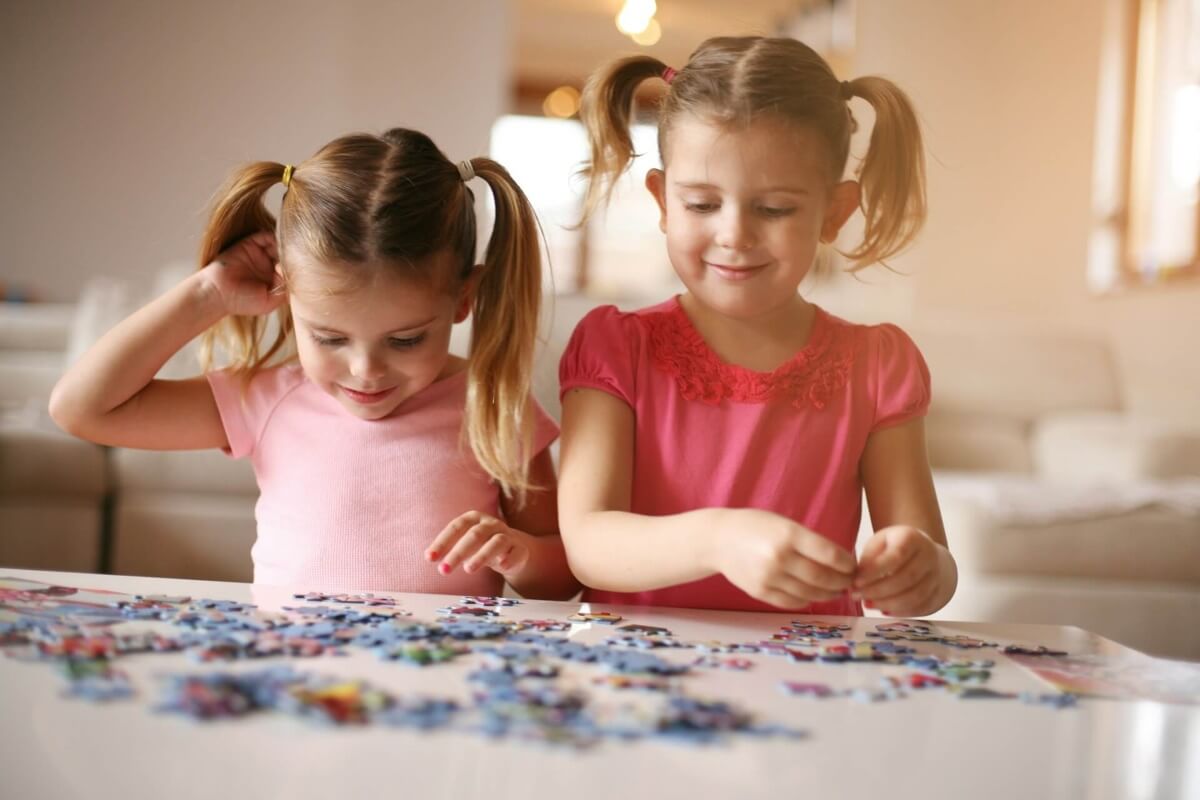
A Clever Toy that is Simple but not Easy about this
The rules of a puzzle seem simple: given the original picture, restore the pieces that have been shuffled, but the abilities it tests and cultivates are very comprehensive. Once a child completes the work, he or she will feel a great sense of accomplishment.
In addition to the "concentration" mentioned above, puzzles have many "benefits", such as:
- Exercise fine motor skills and hand-eye coordination
Children must learn to use their thumbs and index fingers to pick up puzzle pieces, rotate them in all directions, and constantly adjust the angles to piece them together. At the same time, they need to coordinate their eyes and hands to accurately complete the action of piecing together the concave and convex surfaces of the puzzle pieces.
This kind of training in fine hand movements and hand-eye coordination is very helpful for writing skills after going to school.
- Develop logical strategies
When children play more, they will find that there are some strategies for puzzles.
For example, first put together the four corners and four borders; or first put together a single color block area according to color characteristics; find the puzzle blocks with obvious pattern characteristics and then extend them outward according to their characteristics, etc.
With long-term training like this, when faced with complex tasks, children will be able to develop their logical strategies to break down the tasks and eventually complete them.
- Cultivate aesthetics
Nowadays, many puzzles from big brands are very aesthetic. A puzzle is also an original illustration, which can be a good artistic enlightenment for children.
While children are putting the pieces together, they are restoring the work, including perceiving the creators' creative intent, the overall arrangement of the picture, and the exquisite details, thus unknowingly incorporating aesthetic education.
Therefore, when buying puzzles now, in addition to the material, people will pay more and more attention to the appearance of the puzzle and the beauty of the picture itself.
- Language expression ability
After entering elementary school, many children may be afraid of the "compulsory" picture writing, but in fact, puzzles are a good tool to train children to tell stories.
After the excellent puzzles are completed, there is a rich picture and many inadvertent details. We might as well try to start with the children's completed works to guide the children to describe.
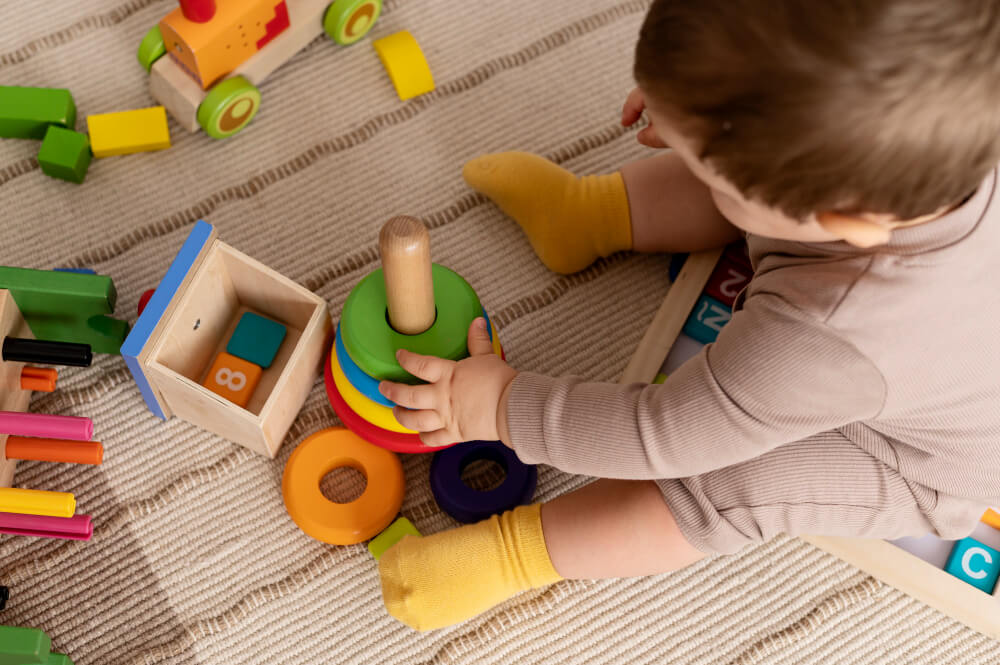
Jigsaw Puzzle Buying Guide
After understanding the various benefits of puzzles, purchase according to the "Jigsaw Puzzle Age Guide" based on the cognitive development of your child.
- Don't copy mechanically and apply indiscriminately! Every child's interests and abilities are very different, and there is no rigid indicator. The list given can only be used as a rough reference.
- When choosing puzzles, consider your child's actual situation and avoid blindly seeking more difficult ones. Puzzles that exceed the child's ability too much may lead to frustration.
- Rather than just increasing difficulty, it is more important to provide puzzles in different forms and with various ways of playing. This helps children break habitual thinking patterns, challenge and adapt to new logic, and maintain their interest in puzzles.
1 Year+
When children are around 1 year old, this kind of wooden shape-matching puzzle can easily help kids build their initial understanding of puzzles and self-confidence because it is not picky about angles and does not require fine motor skills of the hands.
In the beginning, you can only give the child one shape, and then give the others after the child has mastered it. After all the shapes are familiar, you can take them all out and play with them.
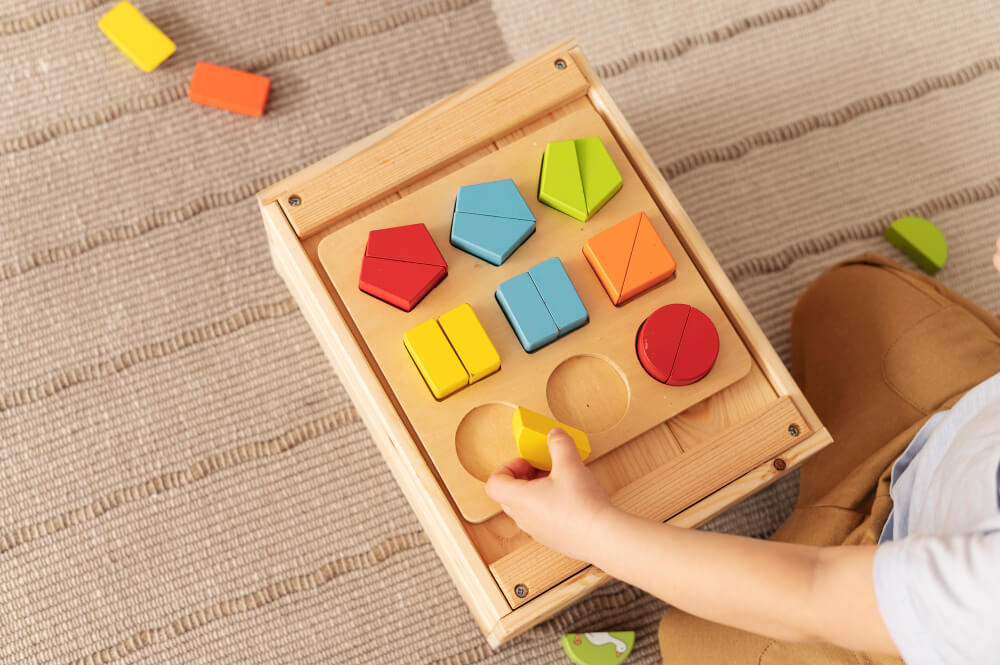
Animal-shaped nested puzzles are slightly more difficult than simple shape puzzles. In addition to matching the pieces together, you also need to adjust the angles so that the pieces can fit into the grooves. You can let your children try this slowly.
Be sure to choose puzzles with thicker materials, larger pieces, and large handles to make it easier for children to grasp.
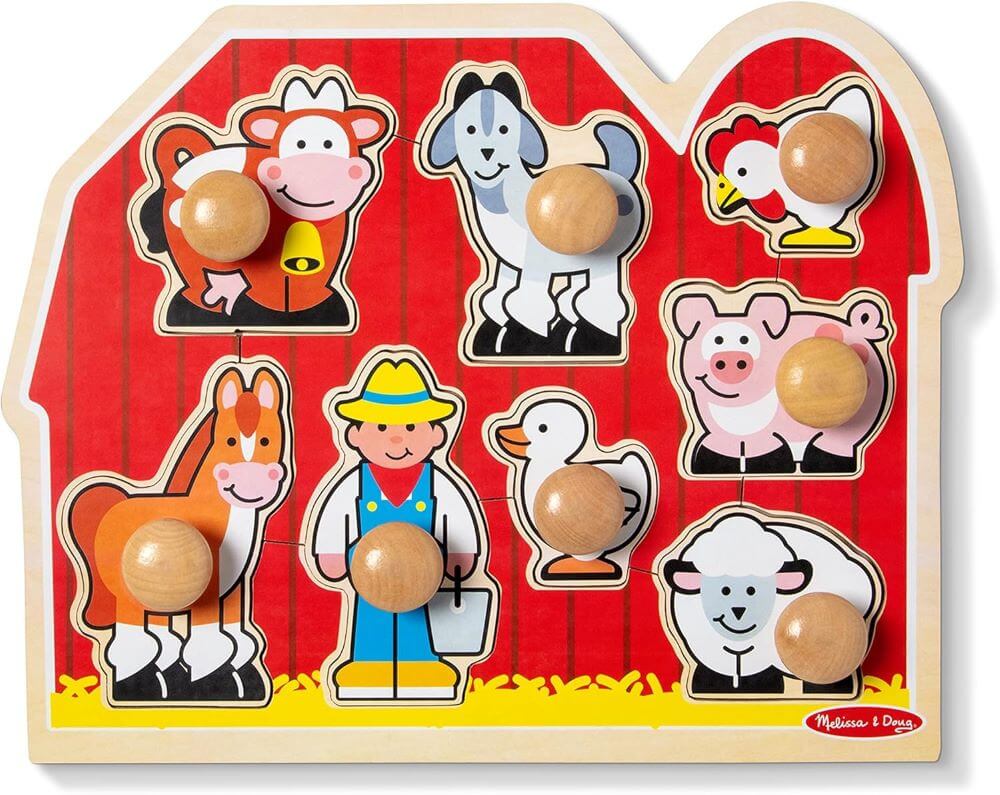
2 Year+
At this stage, the puzzles must choose themes children are interested in. Some children prefer small animals, while others are more interested in transportation.
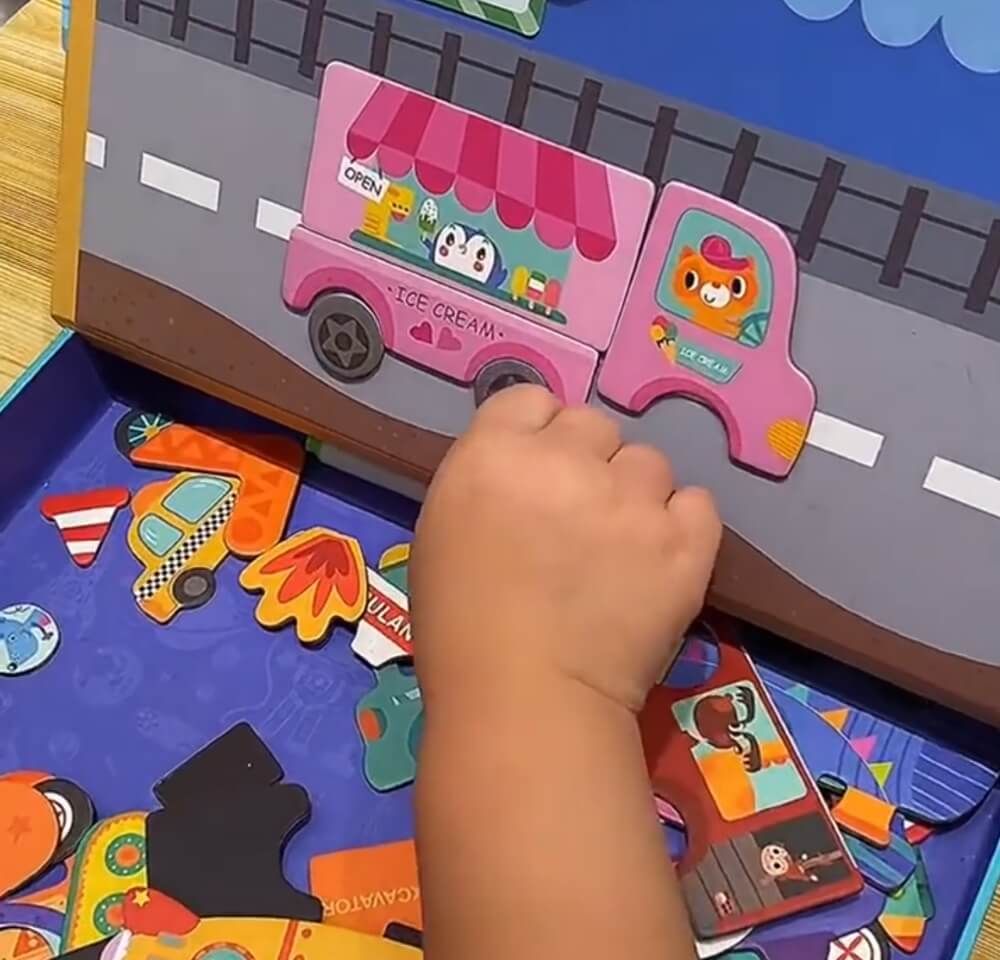
You can also choose a jigsaw picture book, which can tell stories and is easy to carry. You can also take it with you when you go out. It is highly utilized and easy to store.
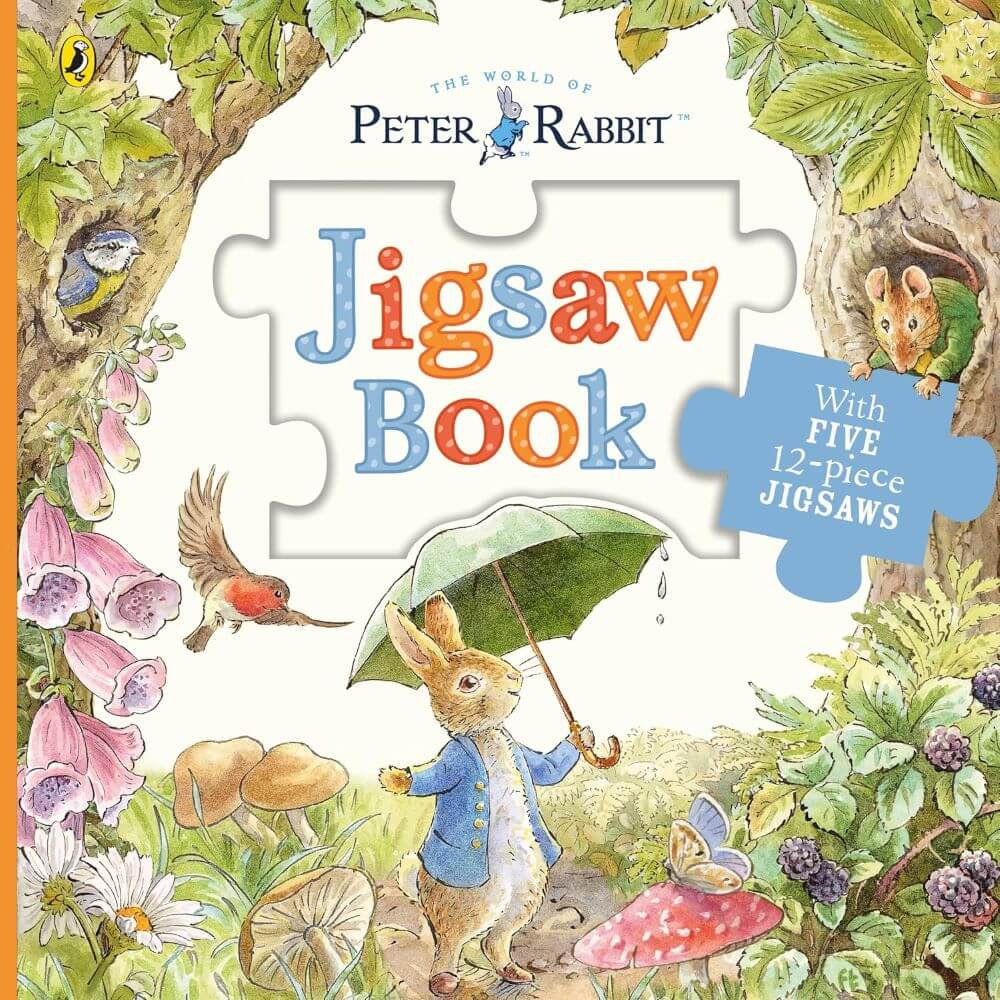
3 Year+
Cardboard puzzles are still the main focus at this stage are more puzzle theme choices, such as dinosaurs, princesses, amusement parks, underwater worlds, etc. There are also some classic IP images, such as Frozen and Peppa Pig.
In addition, this age group can start mathematical enlightenment, so magnetic tangram puzzles are also introduced to cultivate children's early sense of space and plane geometry awareness.

With the help of it, children can learn about shapes, sizes, positions, and directions, and "geometry" doesn't seem so abstract anymore.
4 Year+
Children can try to challenge puzzles with more than 100 pieces! There are more choices, and many patterns are also very detailed and beautiful.

It takes a child nearly an hour to complete a puzzle of this level, even with the help of parents, which can exercise the child's sustained concentration. Sometimes she will be distracted or run away in fear of difficulty. At this time, let her take a break, and then remind her that the puzzle is not yet completed, or the parents help her solve a small problem, and the child will soon be willing to return to the challenge.
Children can play puzzles that integrate knowledge from various subjects, such as geography, natural science, wildlife, etc., and gain knowledge while playing.

5 Year+
Children can now challenge themselves to play puzzles with more pieces, and can also try playing some three-dimensional puzzles.
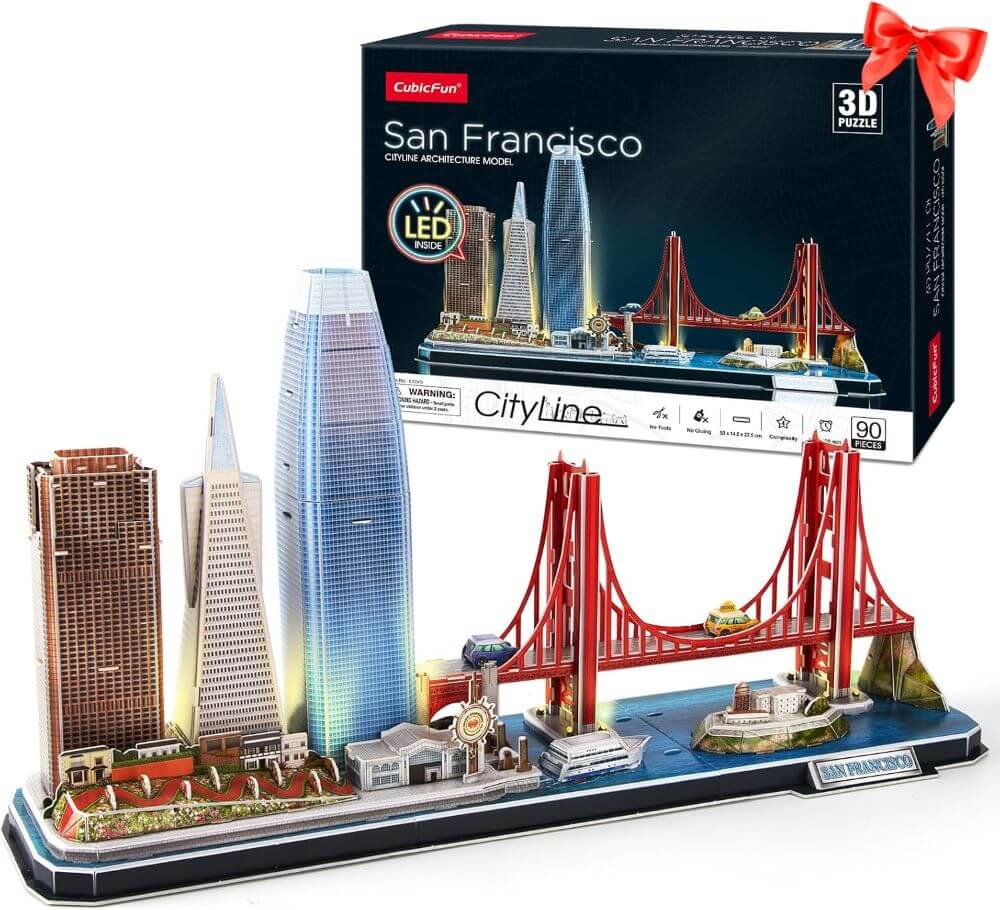
Conclusion
- Choose a puzzle number that suits the child's ability. If it's too simple or too difficult, the child will lose interest.
- The product quality should be high, and the cuts should not be rough.
- The printing quality should be high, and there should be no obvious ghosting or blurring.
- Choose a pattern. First, choose a theme that the child likes; second, choose bright colors and rich details; third, avoid patterns with large blocks of similar colors.